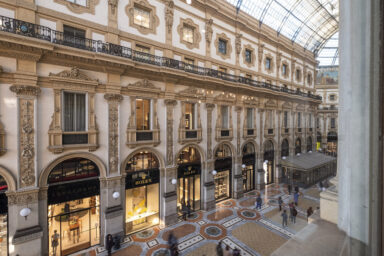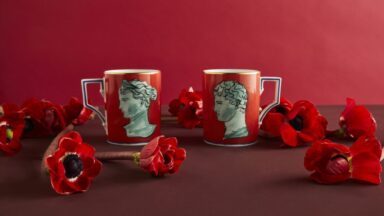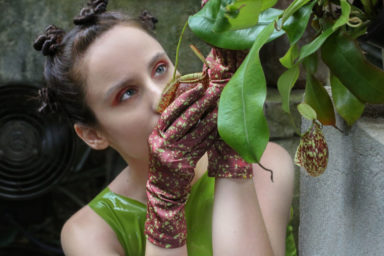For the 16th edition of Artisanal Intelligence, ALTAROMA invites people at Basement Roma to experience firsthand the artisan’s work
Edited by: Fiammetta Cesana
In times when ephemeral images, appearance and pointless celebrations are inevitable in the virtual relationships embracing all of us, the need to return to the materiality of things is becoming increasingly evident and strong, especially in the world of art and fashion. Proof of this, we are witnessing a new wave of live performances of artisans and designers who – by showing their refined techniques between tradition and modernity – enhance the timeless value of arts and crafts.
After Fendi and Hermès Club Carré, it is the turn of ALTAROMA that for the 16th edition of Artisanal Intelligence unites around a table a group of artisans together with curious visitors ready to “get their hands dirty” and really experience the art of craftsmanship.
The exhibition, taking place at Basement Roma, is called “The Artist’s Table” and is curated by Clara Tosi Pamphili and Alessio de’Navasques.
The artist’s or artisan’s table is the place where a work is created. It is a bit like a surgeon’s operating table. It is scientific, because every tool has its own role when working on a material. It is the stage where manual creation is performed.
Here the table is taken as a symbol, to attract people’s attention to the act of making something and on the activity that generates skill. Making a dress or a fabric, building and restoring, treating someone are all specific acts which define roles and identities, such as the ones listed in the Encyclopédie, or Systematic Dictionary of the Sciences, Arts, and Crafts, by Diderot and d’Alembert. This work is rightfully considered as an important exposition of the ideals of the Enlightenment. The same spirit inspires this project, which rediscovers the empiricism of the Enlightenment, according to which our knowledge derives from sense experience.
The exhibition celebrates this idea through two videos by Turkish artist Ali Kazma, which are part of the Resistance series, first exhibited at the 55th Venice Biennale. Made available by the Galleria Francesca Minini of Milan, the videos are part of a visual tale on the efforts which men and women make to pursue continuity, control and physical wellbeing through the creation of a final product, which may be a material work of art or a performance. “Crystal” was shot in France, in a glass factory founded in 1584 which produces elegant, luxury objects using a fragile material that requires the perfect control of gestures. The coordinated movements of workers and craftsmen are somewhat reminiscent of a choreography. Kazma’s camera effectively captures the magical ability of human beings of giving shape to objects. “Calligraphy” shows the hand of a calligrapher while it moves slowly on a sheet of paper and leaves permanent signs that are the extension of the arm.
The spaces of Basement Roma have been divided into a gallery and a workshop. Over three days, it invited people to gather around a table, where a “master” taught them how and when to do things, to use their hands like tools with a very practical approach. People learnt through their sense of touch, in order to re-establish a bond which has been damaged by the prevalence of image-based knowledge. Indeed, images are being produced in such huge amounts that they take up all the space in our minds that is needed to reflect, just like they take up all the memory of our smartphones. While hands work, they generate a specific experience thanks to the elimination of memory, which Henri Bergson called the “intersection of mind and matter”.
Andrea Anastasio, master of ceramics, was the teacher of the first day, followed by Paolo di Landro, who created the Officina Sartoriale (tailor’s workshop), on the second day, and by Livia Crispolti, master of yarns and fabrics, and the boutique Sorelle Antonini on the third day, before its official closure.
The 120-year-old store is the only historical boutique to be specialized in the Pieghettato Artigianale (artisanal pleats) technique. The history of fashion and of cinema are going to lose some really valuable know-how, a unique technique that has been used to design costumes and dresses, but also to restore and repair fabrics. The very famous picture – which perfectly represents what the Sorelle Antonini brand means to fashion and cinema – is the one of Marylin Monroe’s white pleated full circle skirt dress, in which the geometrical pleats perfectly adapt to the shape of her body. This technique was also used by the Fontana sisters, Valentino, Sarli and Gattinoni, as well as for other divas like Greta Garbo. The boutique will explain and transfer a know- how which will disappear with its closure.
“The Artist’s Table”
ALTAROMA, A.I. Artisanal Intelligence
Basement Roma, Via Nicola Ricciotti, 4
From January 24 to 26

















